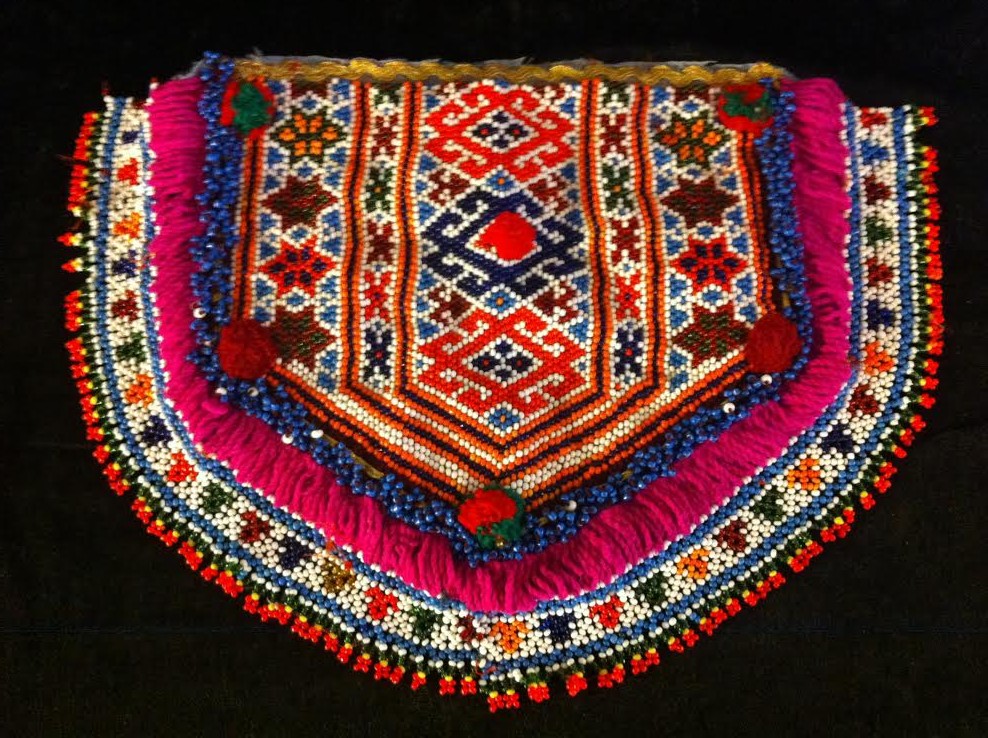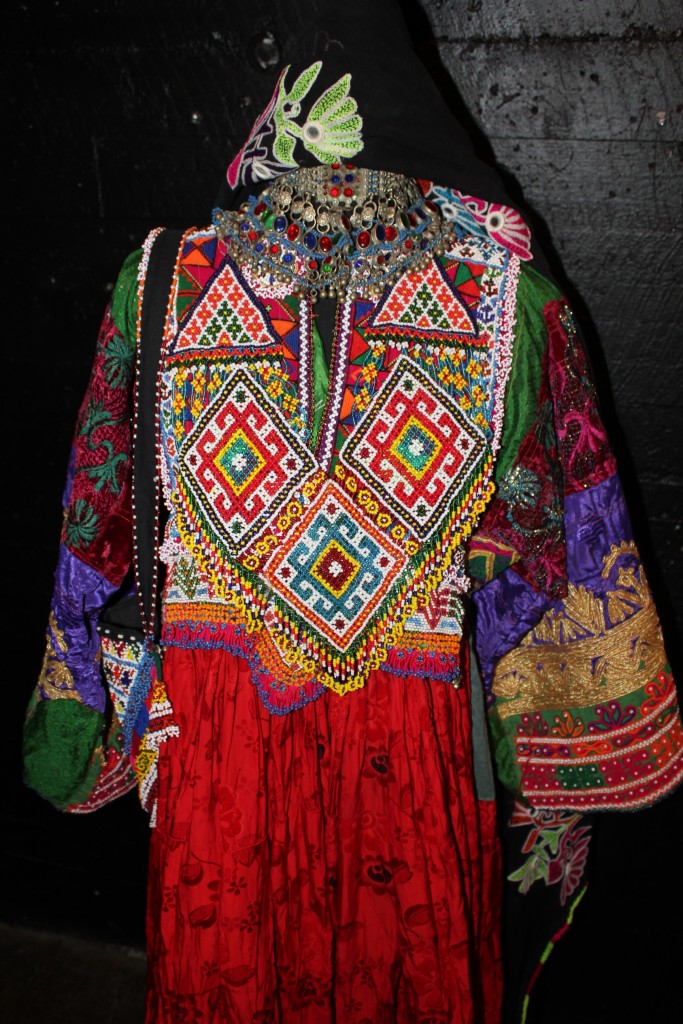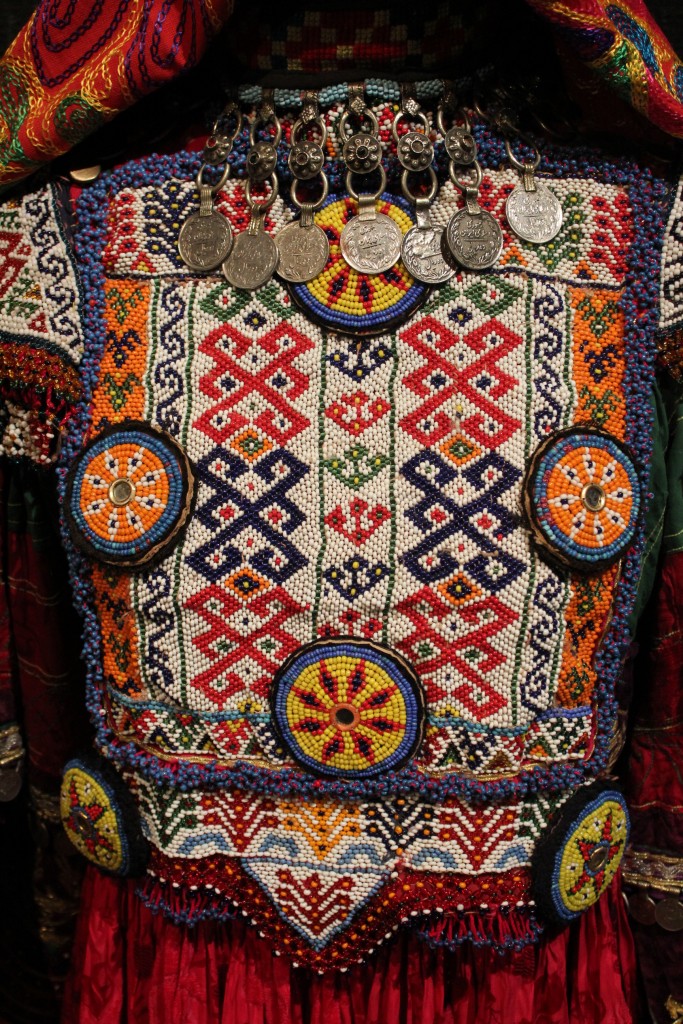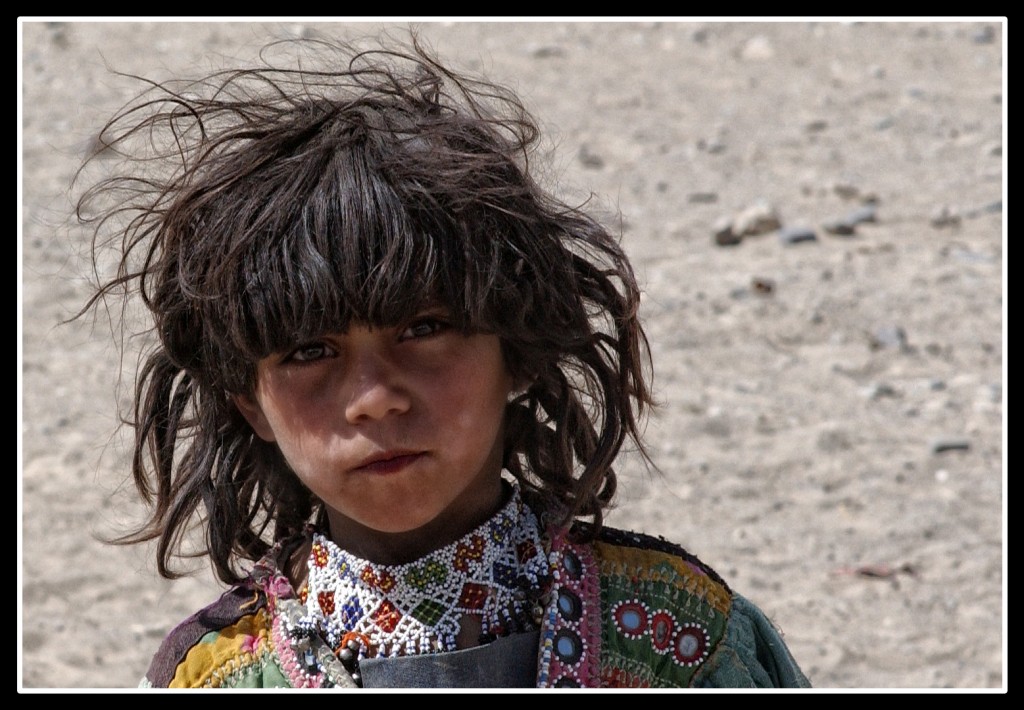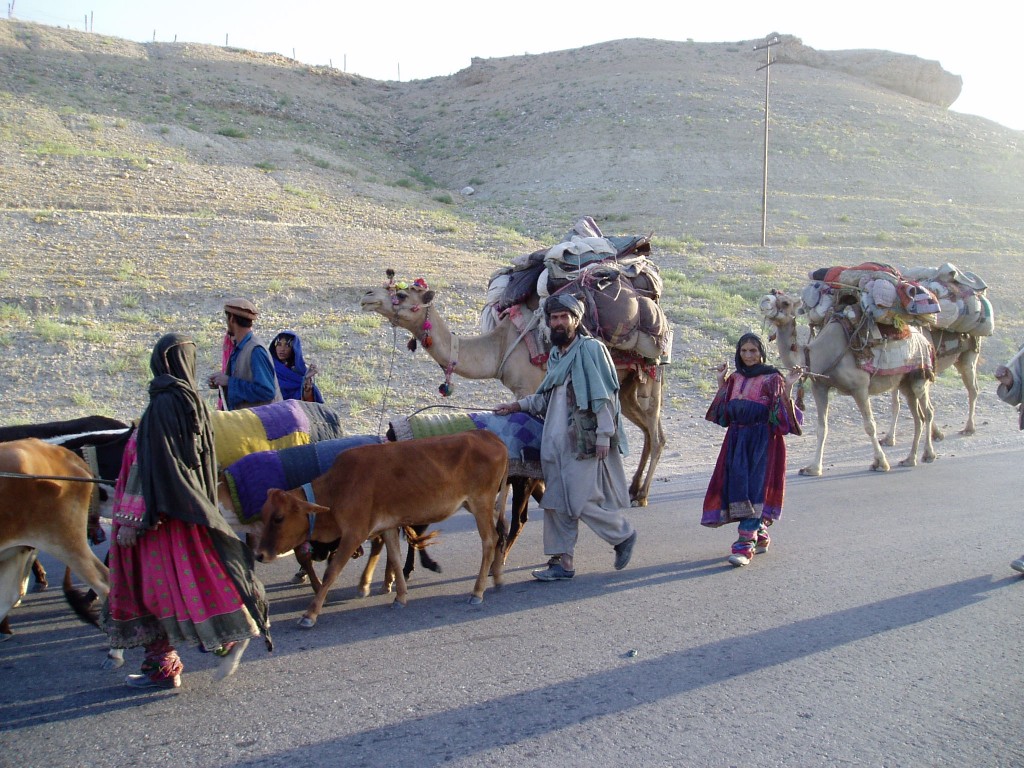The nomads and semi-nomads, generally called Kuchi in Afghanistan, count the number of almost 3 million today. To be a Kuchi is not who one is, but what one is. More than a vocation and less than a race, the Kuchi are more appropriately thought of as a caste of nomadic herdsmen. Their four main animals are sheep, goats, camels and donkeys and they trade with whatever the animals give them.
The Kuchi has through centuries developed an extensive network of exchange along the main routes annually followed by the nomads and are still allowed to cross the board between Afghanistan and Pakistan. They have been one of the main distributors of foreign cultures and new streamlines and they often receive news from distant relations in far-away provinces relatively quickly. The beads have been an important currency when they have traded goods, and are heavily used by the women to adorn themselves and their household.
Beadwork is used extensively in Afghanistan and Central Asia Republics. Items decorated with the traditional fine chain-stich embroidery are further embellished with a twisted thread and bead fringe that seems common to most of Central Asia. Beadwork is also used on dress – on trouser cuffs, sleeve cuffs, shawls, and as gul-i-peron – round discs of beadwork that can be seen on almost all the dresses. The use of symbols and colors is important for protection and good health in everyday life and the dresses are often so heavily decorated with beads that they weight several kilos and light up with its beautiful colors, embroidery and shiny beadwork. A woman, no matter if she’s a settled town dweller or nomad, would acquire status within her community according to her skills in needlework.
There are several amazing dresses and decorated items from the Kuchi in the Beads around the World-exhibition.
